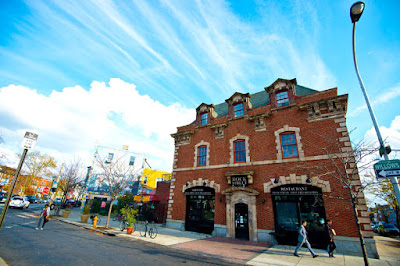a primary
source of nourishment that grows and is distributed everywhere
Adaptable Rice is the basic food for nearly half of the
world’s population, it can be kept for a very long time and in the case of
famine, can be a lifesaving food source. In some cultures, it is as valuable as
money or gold and is an essential commodity for those living in tropical and
sub-tropical climates.
Cocoa Pre-Colombians have cultivated cacao for millennia playing a fundamental
role in the Maya and Aztecs’ nutrition and culture. Whatever its use, food,
drink or in exchange for other goods, it
was the symbol of energy, fertility and life. Today it is the main ingredient
of chocolate and it is grown in over two dozen developing economies.
Coffee from the land to the
coffee cup via the greenhouse, transportation, t
and the coffee bar. One of the most important drinks in
the world, it is a huge source of revenue and development to the many countries
that have introduced this cultivation into their agricultural development plans
providing work for hundreds of millions of people.
Essential to Our Diet
Fruits and Vegetables contain a large variety of plants with different shapes, scents and colors. Fruits and legumes have been consumed for centuries and are the
symbols of myths, legends and traditions in many cultures. Cultivation began in
the Mediterranean region, mainly due to it having the best climate to grow and
cultivate fruits; the Egyptians, Greeks and Romans were knowledgeable of these
food products but it was only from the medieval period that improvements in
fruit cultivation took hold. Later, immigrants brought fruit and legumes to the
American continent, resulting in their widespread cultivation. Soya and beans
were found in Central and Southern Asia and in Central America respectively.

Legumes are a main food source in many
emerging countries ensuring food
security. As a key part of the food chain and due to their vitamin and
mineral content, they are used as a substitute for cereals in the agricultural
rotation system, helping prevent land depletion. Their high calorie content plays
a vital role in reducing poverty and generally improve health and nutrition
across the world.
Spice Routes have guided explorers in
their search for these precious commodities; a journey through cultures and a
unique sensorial experience. Their cultivation, preparation and use is also
tied to medicine and for socio-cultural rituals, including magic. Spices and aromatic herbs have always
inspired long journeys; emperors, kings, aristocrats and merchants considered
them into the most luxurious product of the ancient commercial routes. In our
time, spice production and trade have increased thanks to a trend in healthier
eating habits.

The Seeds of Civilization Cereals
have played a key role in bringing
civilization and food to huge numbers of people and are the staple diet
of the majority of the world’s population thanks to their nutritional
properties, low cost and ability to satisfy hunger. With over 10,000 varieties of cereals and tubers,
only a few have been cultivated. Farmers could address important global challenges such as sustainable
growth and the fertility of marginal lands not suitable for cultivating maize,
rice and wheat and help satisfy the ever-growing demand for food over the
coming decades. Roots and tubers are now the second most important source of
carbohydrates after cereals, containing many minerals and vitamins, and are a
basic food for over a million people in emerging countries.

Cradle of Civilization The Mediterranean Sea connects Europe,
Africa and Asia. Food traditions have played a vital role in helping to
preserve the uniqueness of this area and local resources such as wheat, olives
and grapes. Here, a meal is both the act of eating food and an essential aspect
of social and cultural life. The Mediterranean diet implies taking the time to
enjoy a meal around the table with several convivial rituals that
have survived for generations still practiced today. Mediterranean people
spend more time preparing and tasting their meals than anyone else. With a
healthy diet that ensures the preservation of agricultural biodiversity,
The Mediterranean diet is fully sustainable

Protecting the Ecosystem The Pacific islands, the Western Indian Ocean and the islands
of the Caribbean region are
small, diverse and remote, resulting in native and self-reliant cultures and
economies; unique island nations they share the same challenges. The rise in coastal
flooding, the salt levels within the soil and changes in rainfall levels lead
to contamination and greatly reduce production in cultivation. This lack
of food security also applies to fishing activities.
Food without Water The arid
zones are quite different from one another. They differ in soil types, flora
and fauna, water balance and levels of human activity. Another
misconception is that these places are uninhabited when in fact a fifth of the
world’s population live in arid zones and suffer from a distinct lack of water.
What makes then similar is dryness, measured by weather temperature and
rainfall. This index consists of three main categories: super dry, dry and
semi-dry. For centuries, man has tried to promote and utilize different
techniques in order to find one system for managing hydric sources, such as rainwater collection or water
retention. Research has enabled farmers to measure their levels of rainfall
locally and either use innovations suited to their conditions, or adapt their
own traditional methods to ensure better water utilization levels. Still, the
lack of water and the impact
of climate change remain a matter of urgency.
Discover the Connection between Geography
and Food
with
Knowledge Tourism
tema@arezza.net skype arezza1 arezza.org


























